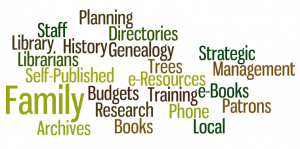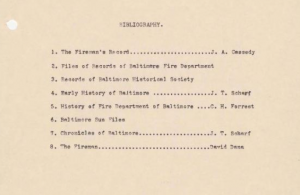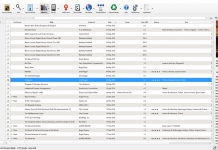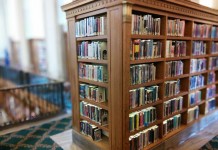 While libraries everywhere are scrambling to come up with an ebook plan that can satisfy both their patrons as well as their long-term organizational goals, sometimes the greatest resources they can offer are already in their libraries. What’s this? Simply put, it’s the utilization of their local resources, of history, genealogy, and local authors. This is the sort of information that is highly desired, yet sometimes falls off the radar, lost to the deluge of publishers, best-sellers and other more “trendy” technological items.
While libraries everywhere are scrambling to come up with an ebook plan that can satisfy both their patrons as well as their long-term organizational goals, sometimes the greatest resources they can offer are already in their libraries. What’s this? Simply put, it’s the utilization of their local resources, of history, genealogy, and local authors. This is the sort of information that is highly desired, yet sometimes falls off the radar, lost to the deluge of publishers, best-sellers and other more “trendy” technological items.
It’s easy to dismiss local materials from any project planning, arguing there’s no budget, no staff and no easy method of making these items easily accessible for the patrons of the library. However, I would argue that depending on your approach, this isn’t really the case. The biggest issue is planning, both in terms of where the library is going and how these items can help the library achieve those goals.
From a budget perspective, many local materials are donated to the library, so the costs, especially for self-published items, can be minimal, especially if the library can work together with the local historical or genealogical society. In this same vein, staff can work with library volunteers, friends-of-the-library groups and others to provide the many hands needed to sort, preserve and digitize these materials.
As to software and related hardware needed to make these local materials available, portable scanners can make short work of individual unbound pages, with digital camera shots being able to back up and image those works who might be too fragile for this approach. From the software standpoint, especially if the library is looking to implement a modern approach with a multiplicty of formats advocated by many online book sites these days, Calibre, http://calibre-ebook.com/, iBooks Author, http://www.apple.com/ibooks-author/, and Booktype, http://www.sourcefabric.org/en/booktype/ are just a few examples of packages that can work.
Having digitized these local items, the remaining questions more than likely will center on methodologies of storage and acquisition, that is how will your patrons access these fruits of the library’s local content project? A traditional website is always an option, but today’s world also offers a huge multiplicity of options such as Omeka, http://omeka.org/, Google Sites, http://sites.google.com, and Tumblr, https://www.tumblr.com/, just to name a few.
Will it be easy? No, not really. Is this a valuable project worth undertaking by the library? Yes, it is. By making these locked away materials available for your local community and patrons, you can help change perceptions of your library as well as offer unique facts and information. Why not give it a try? Think outside the traditional “library boundaries” and see what happens…you might be surprised!
Sources:
The Internet Archive. “The Early History of Fire Protection in Baltimore City…”

































